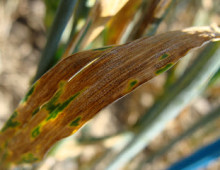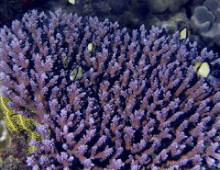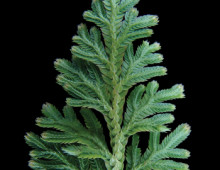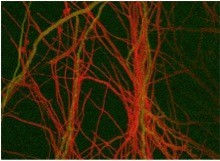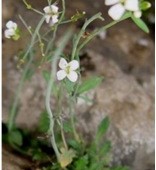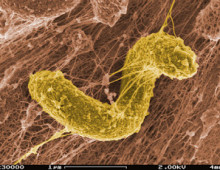First Finished Filamentous Fungus
An international consortium of scientists, including scientists from DOE JGI, have published the analysis for Mycosphaerella graminicola, the first filamentous fungus to be fully finished. Having the 39.7 million nucleotide genome available will enable researchers to learn more about the methods plant pathogens use to attack and damage crops, including those being considered for use… [Read More]
